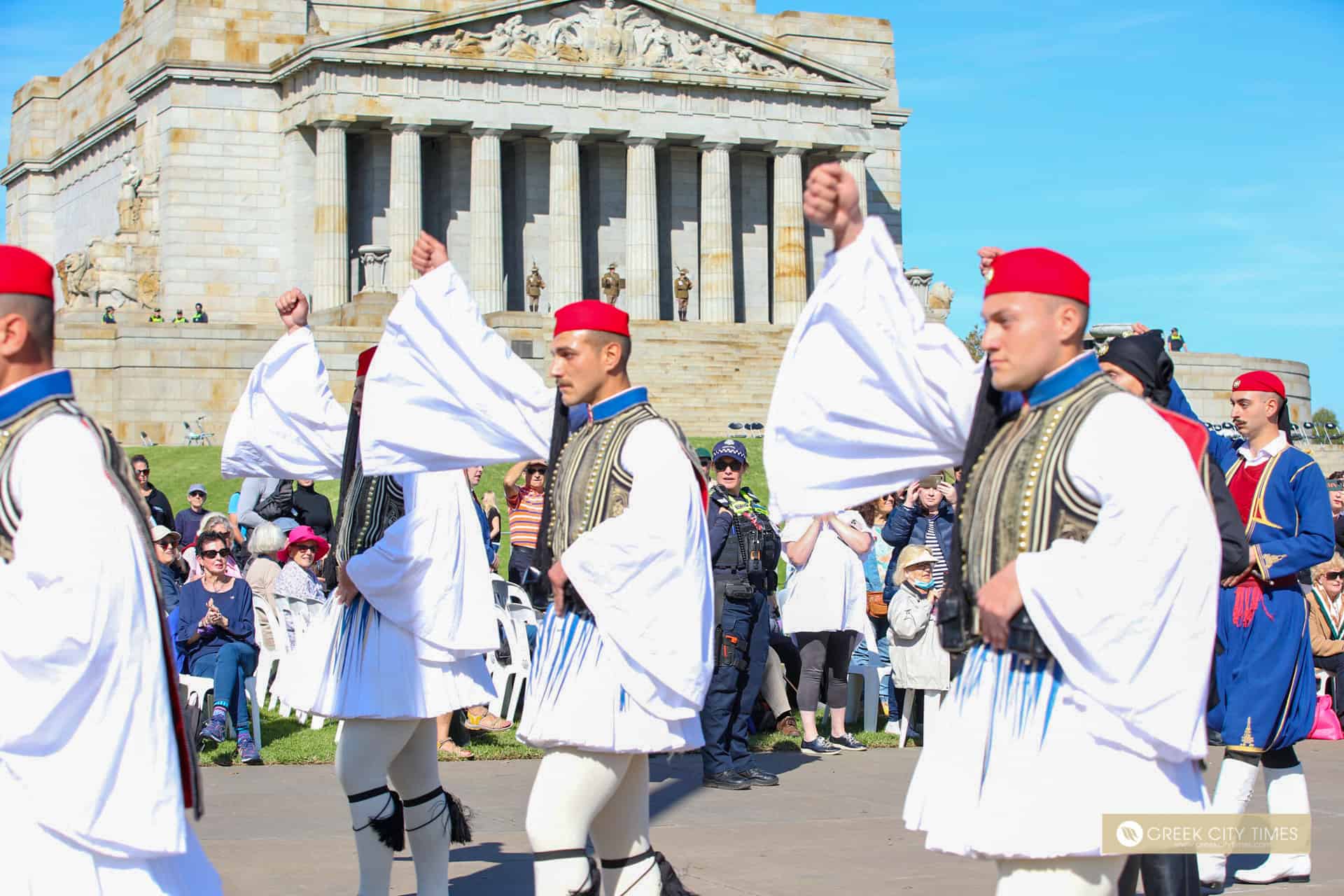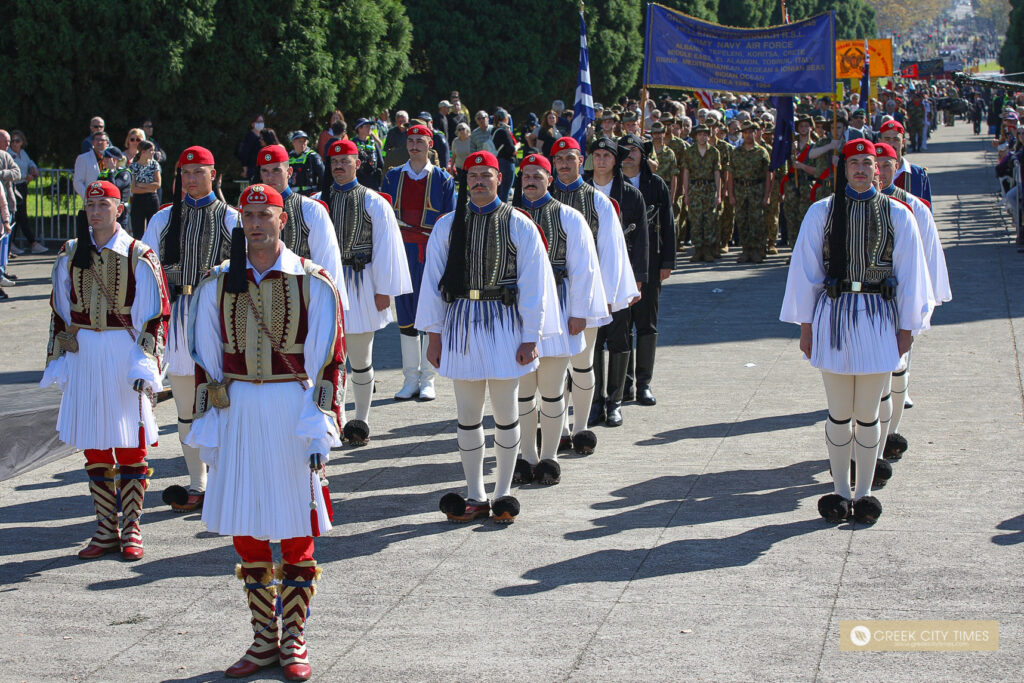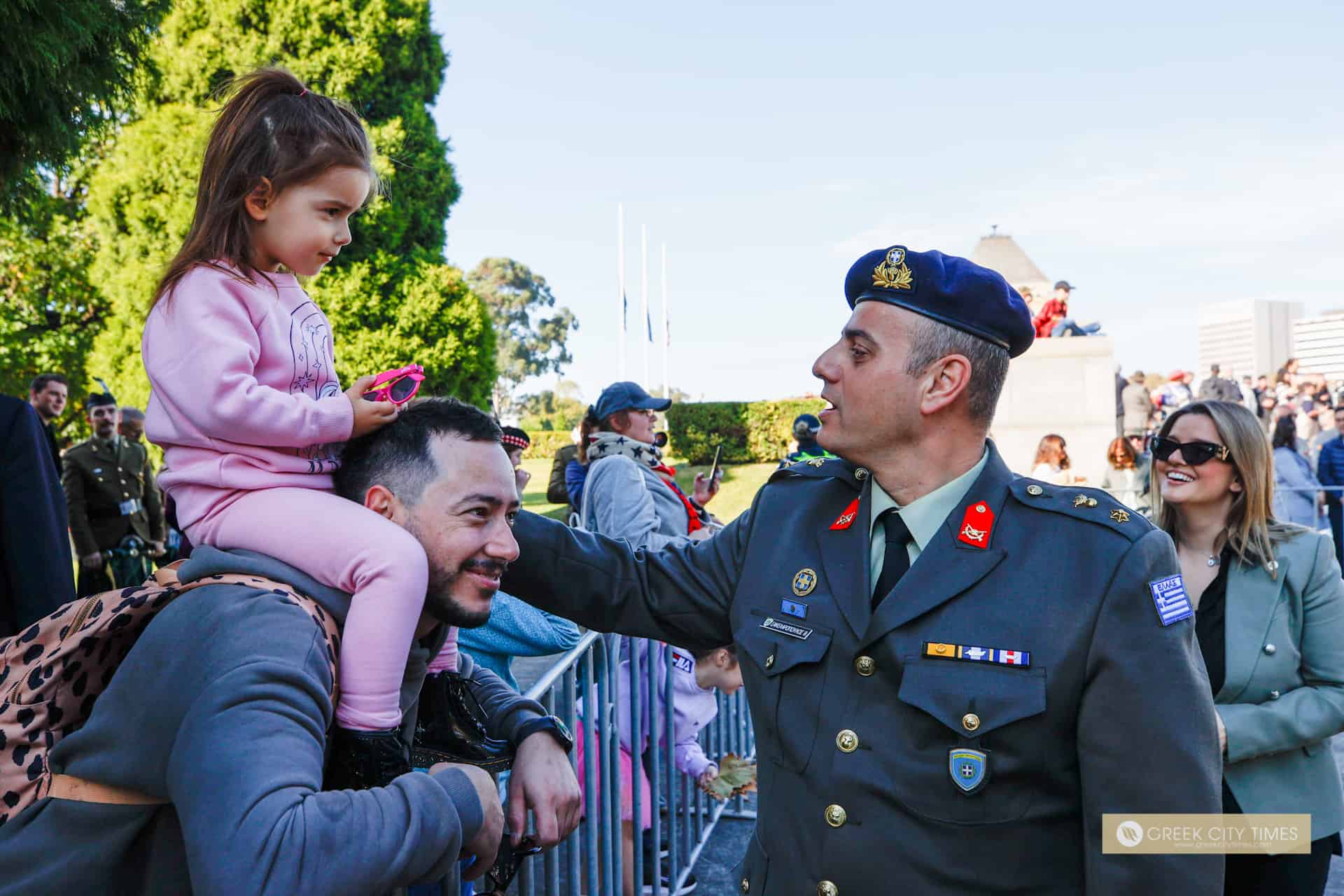

In Melbourne, Greece’s Presidential Guard Evzones led the Allies and Greek contingent at today’s Anzac Day march and Wreath Laying Ceremony at the Shrine of Remembrance, hosted by the Victorian Returned Services League.




It is also the day where we remember all Australians who have served and died in war and in operational services.
When war broke out in 1914, Australia had been a federated nation for only 13 years, and its government was eager to establish a reputation among the nations of the world. When Britain declared war in August 1914, Australia was automatically placed on the side of the Commonwealth. In 1915 Australian and New Zealand soldiers formed part of the expedition that set out to capture the Gallipoli peninsula in order to open the Dardanelles to the allied navies. The ultimate objective was to capture Constantinople, the capital of the Ottoman Empire, an ally of Germany.
The Australian and New Zealand forces landed on Gallipoli on 25 April, meeting fierce resistance from the Ottoman Turkish defenders. What had been planned as a bold stroke to knock Turkey out of the war quickly became a stalemate, and the campaign dragged on for eight months.
At the end of 1915, the allied forces were evacuated from the peninsula, with both sides having suffered heavy casualties and endured great hardships. More than 8,000 Australian soldiers had died in the campaign. Gallipoli had a profound impact on Australians at home, and 25 April soon became the day on which Australians remembered the sacrifice of those who died in the war.
Although the Gallipoli campaign failed in its military objectives, the actions of Australian and New Zealand forces during the campaign left a powerful legacy. What became known as the “Anzac legend” became an important part of the identity of both nations, shaping the ways in which they viewed both their past and their future.
ANZACs IN GREECE
Today we also remember the ANZACS who fought in the Battle of Greece and Crete.
On 6th April 1941, the Battle of Greece was one of the first engagements of the Australian Army against the Nazis in World War II.
Many of the Anzacs of Greece and Crete (e.g. Anzac Constantine Aroney) had also fought in the first Anzac Campaign in Gallipoli a few decades years earlier and are rare “Dual Anzacs”.
Some of the Anzacs of Greece and Crete (e.g. Anzac James Zampelis) came from Greek Australian migrant families.
The Greek and Crete Campaign included Australia’s highest-ranked Indigenous Australian soldier Captain Reginald Saunders who was supported and saved by the Cretan people for nearly a year until escape. Their human bonds are an important Australian story and will empower indigenous Australians and contribute to reconciliation.
Of the 1,686 Anzacs, 646 Australians are buried or memorialised in Greece in Phaleron, Athens, Rhodes and Suda Bay in Crete. Over 50 per cent of deceased Australians have never been found or are unidentified and are memorialised at the Athens Memorial.
8900 Anzac prisoners of war were captured in the Battle of Crete and Greece, representing 83% of the Australian soldiers captured by the Nazis in World War II.
The Anzacs had come from one of the newest democracies to fight in Greece, the birthplace of Democracy for freedom and liberty.
Some 11 per cent of the Greek general population and 80 per cent of the Jewish population perished as a result of the Nazi invasion.
Lest We Forget.
Images by Nick Bourdaniotis/Bourdo Photography (Copyright)
His All-Holiness Ecumenical Patriarch Bartholomew was accorded a position of special honor at Pope Francis’…
Styliana Averkiou, a 25-year-old makeup artist and fiancée of Cypriot YouTuber and MEP Fidia Panayiotou,…
Maria Sakkari of Greece outclassed Jasmine Paolini 6-2, 6-1 in the round of 32 at…
Cracks in roads and homes in the Voutes area southwest of Iraklio, Crete, likely caused…
Nammos Resort AMAALA, Greece’s iconic beach club brand’s first international venture, will open in Saudi…
Klavdia Papadhópoulos will represent Greece at Eurovision 2025 with her powerful song Asteromáta, a tribute…